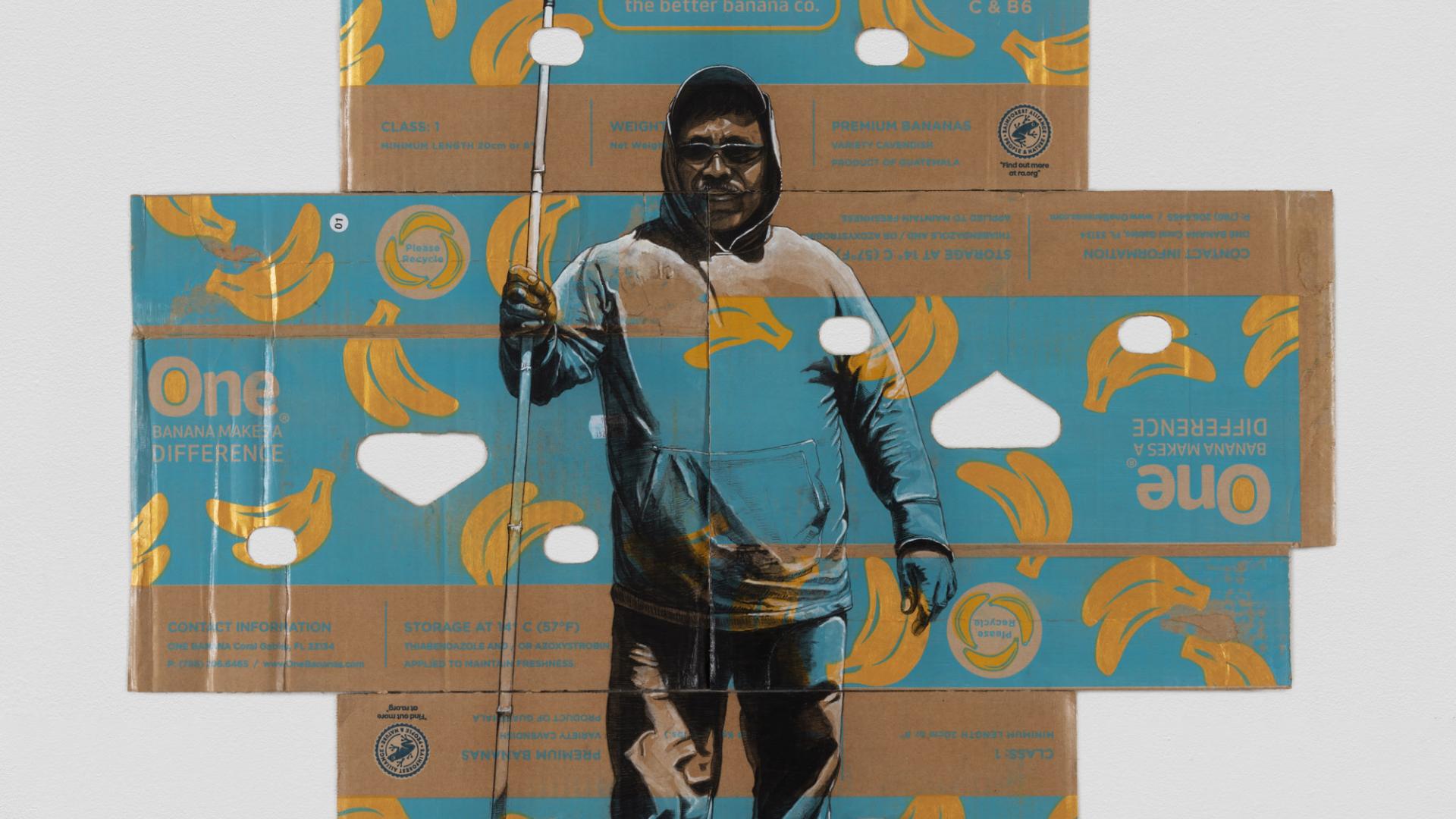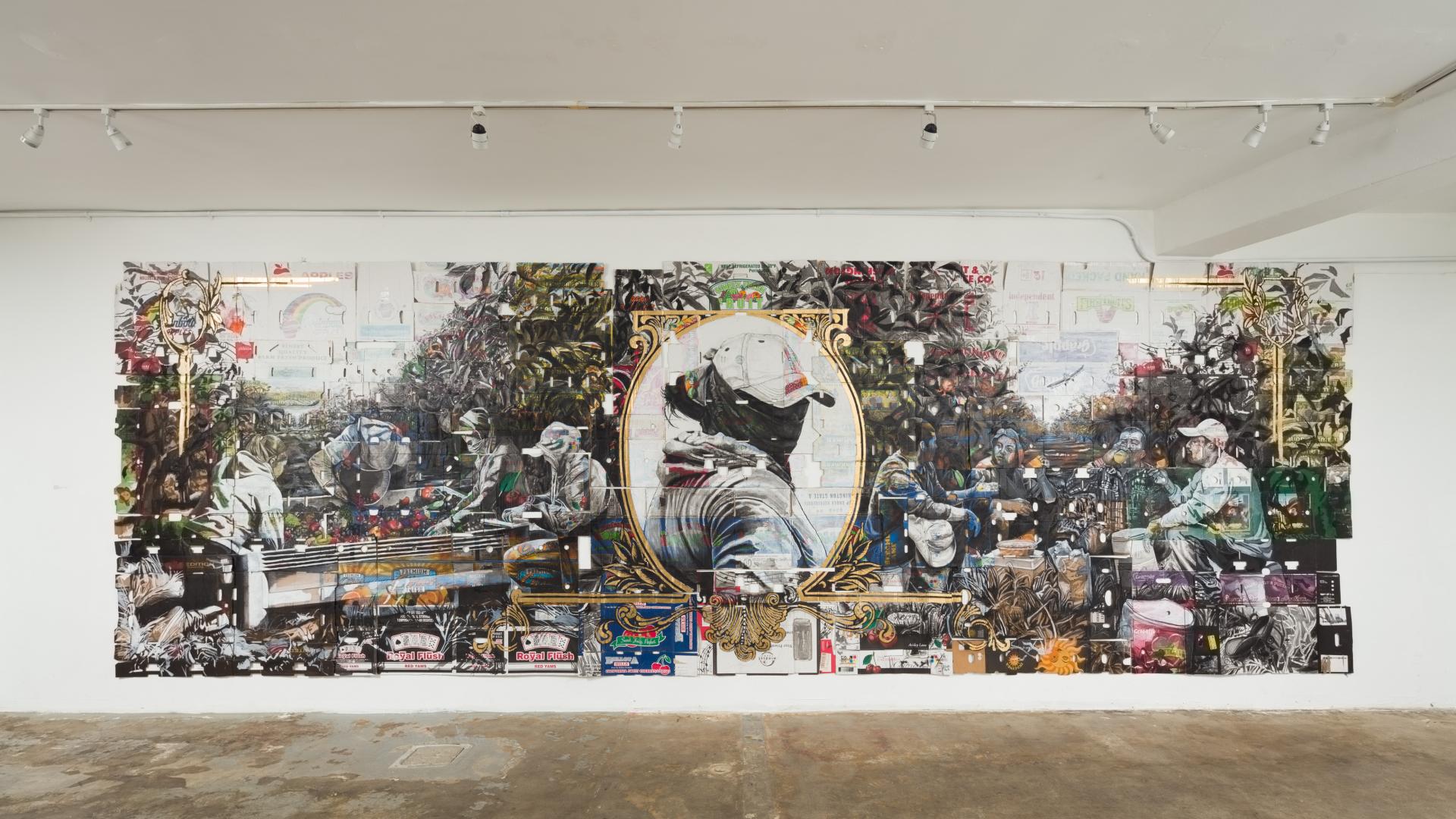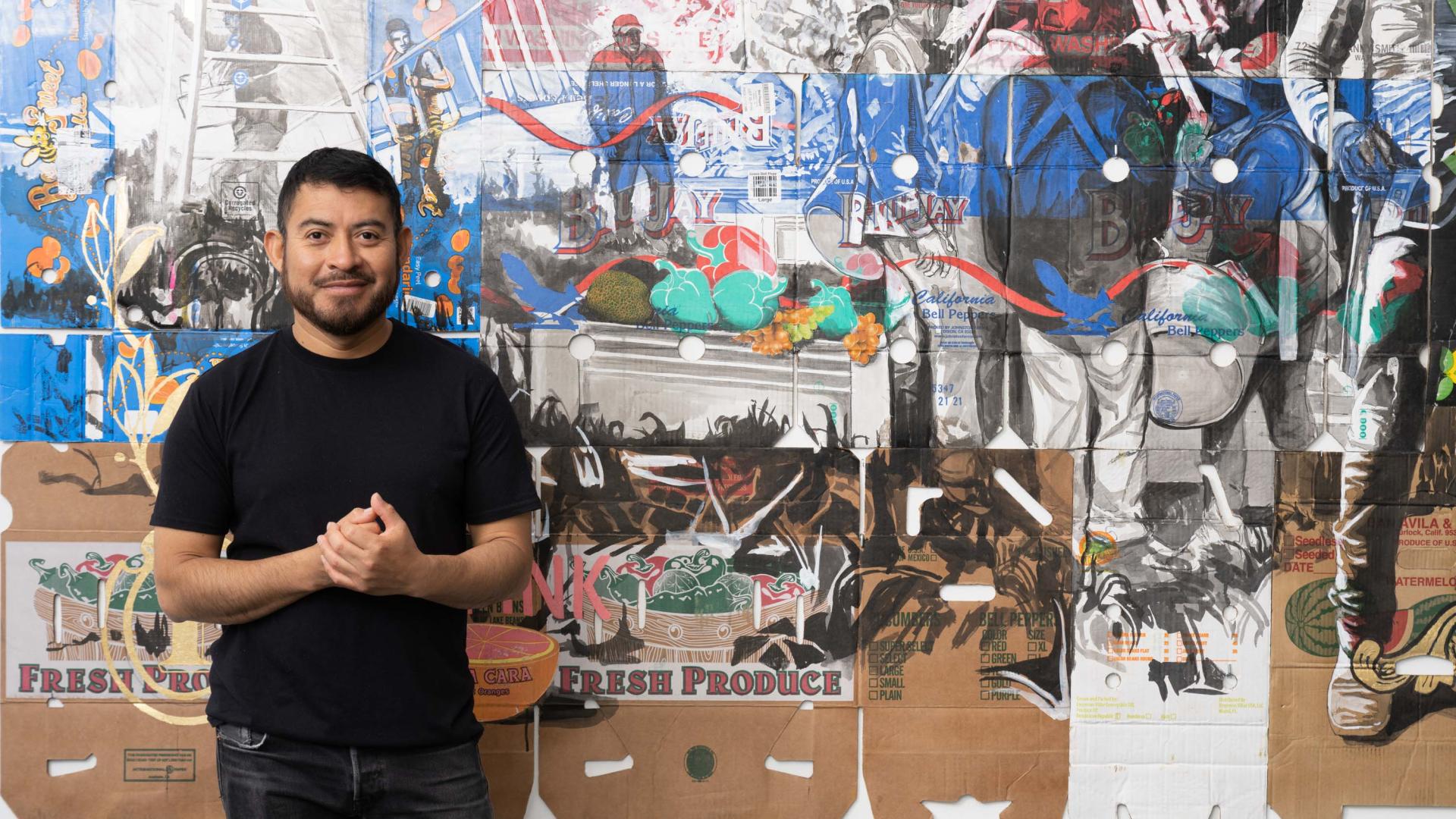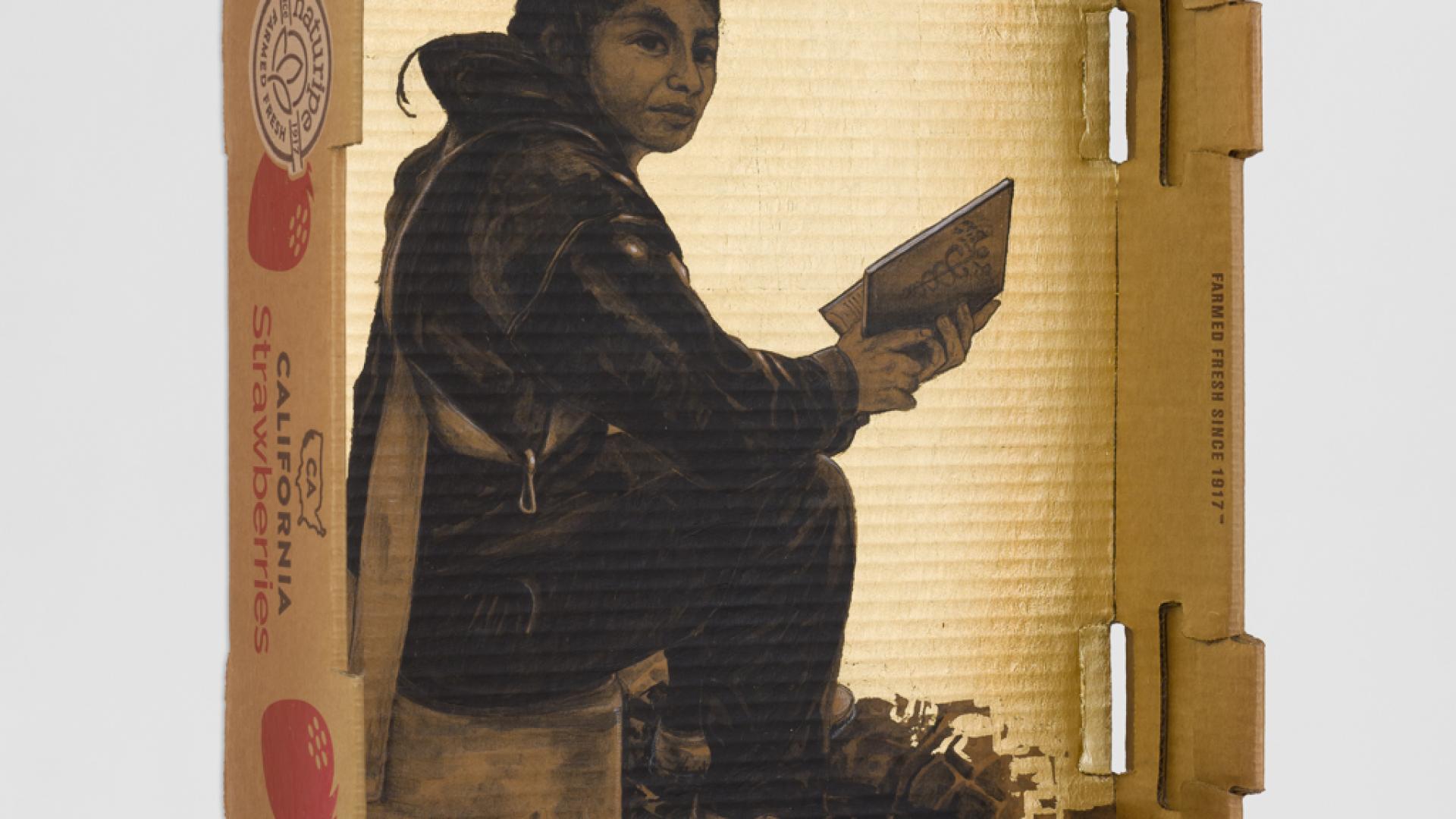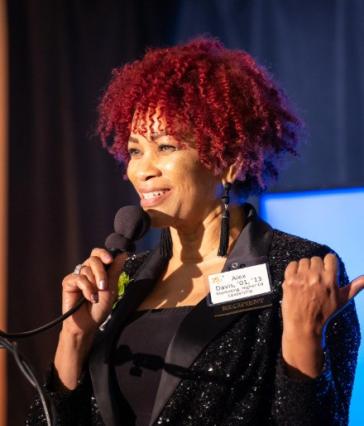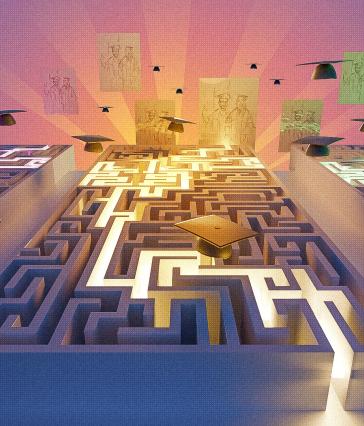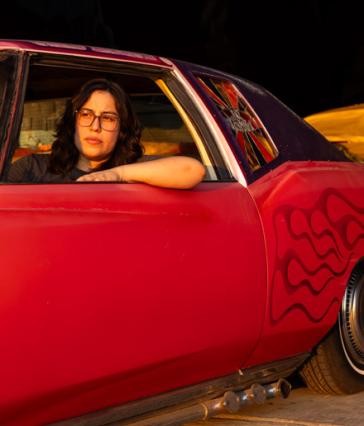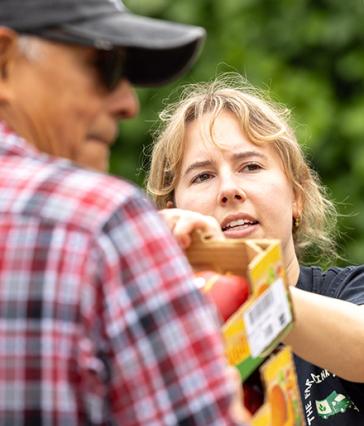Meet this CSULB alumnus whose artwork shines a light on farmworkers
Narsiso Martinez '12, '18 knows the struggles of field workers who help feed this country and the world, yet often go unrecognized or underappreciated.
To pay for college at Cal State Long Beach, Martinez worked alongside farmworkers picking fruit and produce, often under extremely hot conditions with pesticides in the air. The workers soon became his subject matter, and he would photograph them and paint their portraits on discarded fruit and produce boxes. Now, he wants to make a difference through his art and shine a light on these communities.

“I worked in the fields since I was a kid. Maybe even by force,” said Martinez, a native of Oaxaca, Mexico. “It’s hard work. I feel like people who work in the fields have it difficult. But everybody eats. And people are acknowledging their labor now.”
Martinez has come a long way since he struggled to sell a single painting. Now, he’s a well-regarded and frequently exhibited artist who makes a living solely through his art. He has had solo exhibitions at the Long Beach Museum of Art, Museum of Latin American Art, Institute of Contemporary Art San Diego and Buffalo AKG Art Museum, as well as group shows in numerous museums and galleries.
He won the prestigious Frieze Impact Prize in 2023, and the Dedalus Foundation MFA Fellowship in Painting and Sculpture in 2018. He has been featured in the Long Beach Post, Los Angeles Times, New York Times, PBS Newshour and PRX’s “Latino USA.”
“Everything I know is from Cal State Long Beach,” said Martinez, who received his B.F.A. in drawing and painting and his M.F.A. in art. “I had very little or no art experience when I went to CSULB. I literally started from scratch, when it comes to learning how to paint, live drawing. I was doing my best to grab as much information as possible. I really learned a lot from everyone. I discovered art and how to be an artist at Cal State Long Beach.”

Martinez is part of a group of Chicano/a and Latine artists who have graduated from The Beach’s art program and are establishing names for themselves in the art world.
Martinez credits CSULB professors Marie Thiebault for illuminating color theory, Yu Ji for teaching him how to draw, Fran Siegel for “experimentation” and “learning how to get through the comfort zone,” and art historian Catha Paquette for including historical context in his work.
About her former student, Thibeault said, “As a B.F.A. major, Narsiso distinguished himself early on as one of the most exceptionally talented and curious of a very strong group of students. He was incredibly engaged and hardworking and lifted the energy of the whole group to a higher level with his example.”
Paquette, who teaches art history and specializes in Latin American art and architecture, said, “In classes back then and his artwork now, Narsiso has engaged in crucial conversations about agricultural production and migrant labor — conversations going on since the 19th century.
“Narsiso counters images, spoken and printed speech, and behavioral actions that erase or minimize the contributions of migrant field workers or mischaracterize them, such as demonizing or romanticizing them. What's distinctive is that he personalizes labor.”
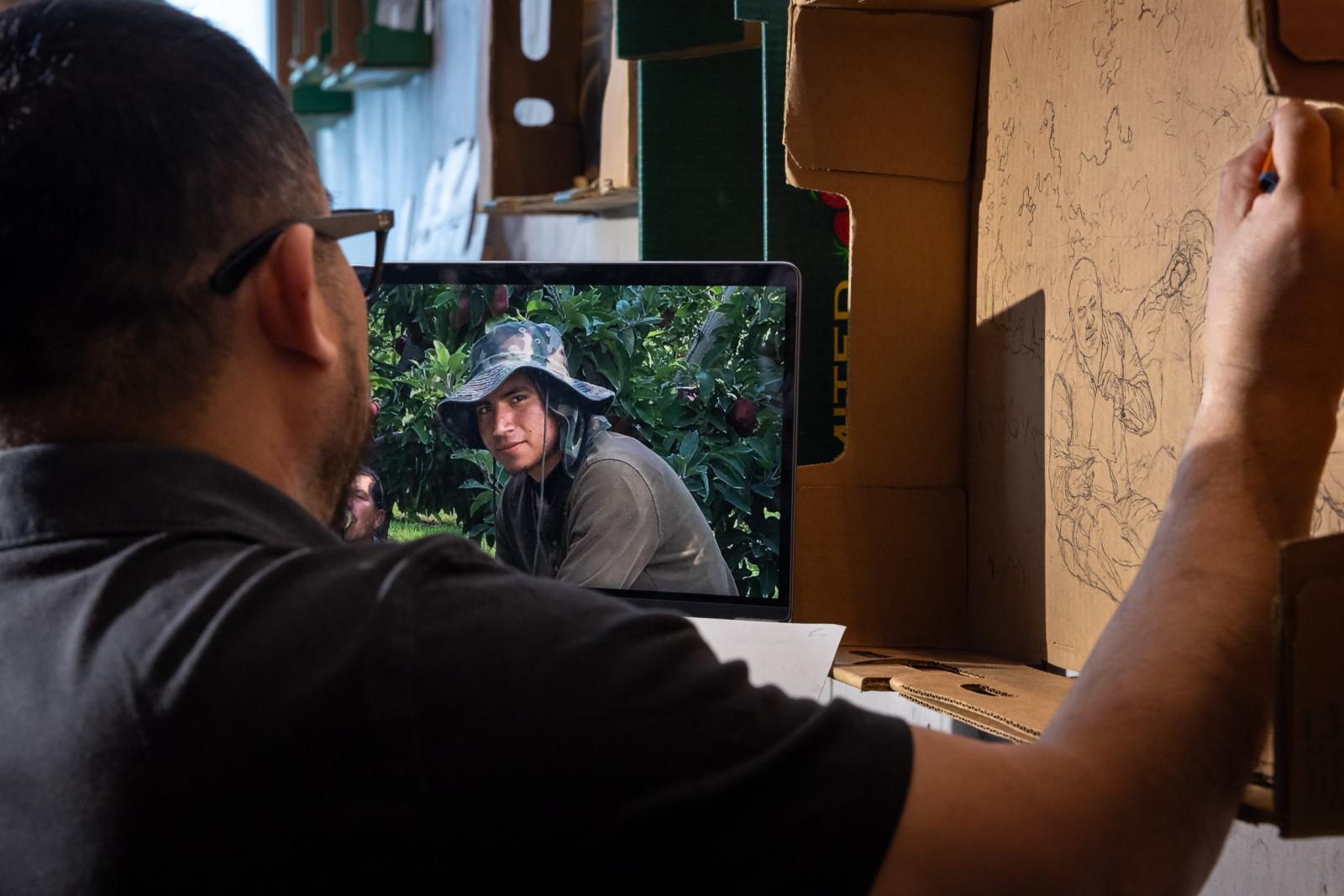
Martinez says he also gets inspiration from famed Mexican muralist David Alfaro Siqueiros, who created a mural in downtown Los Angeles that was covered up with white paint yet restored in 2012. “He motivated me to create art that speaks for underrecognized communities.”
“He motivated me to create art that speaks for underrecognized communities.” -Narsiso Martinez
Using discarded cardboard produce boxes and labels as his canvas, Martinez aims to draw connections – or elucidate disconnections – between people who work in agricultural fields and the people who benefit from their labor.
At times, he depicts laborers wearing caps, bandanas, hoodies and pesticide-filtering masks as they would in the fields, making them look anonymous. Other times, he will draw recognizable faces and figures, often from photos he’s taken in the field.
“When I have a show close to where farmworkers live, and they’re able to see the show, I love to see the expression on their faces,” he said. “They get excited, they’re being talked about. That makes it worth it.”
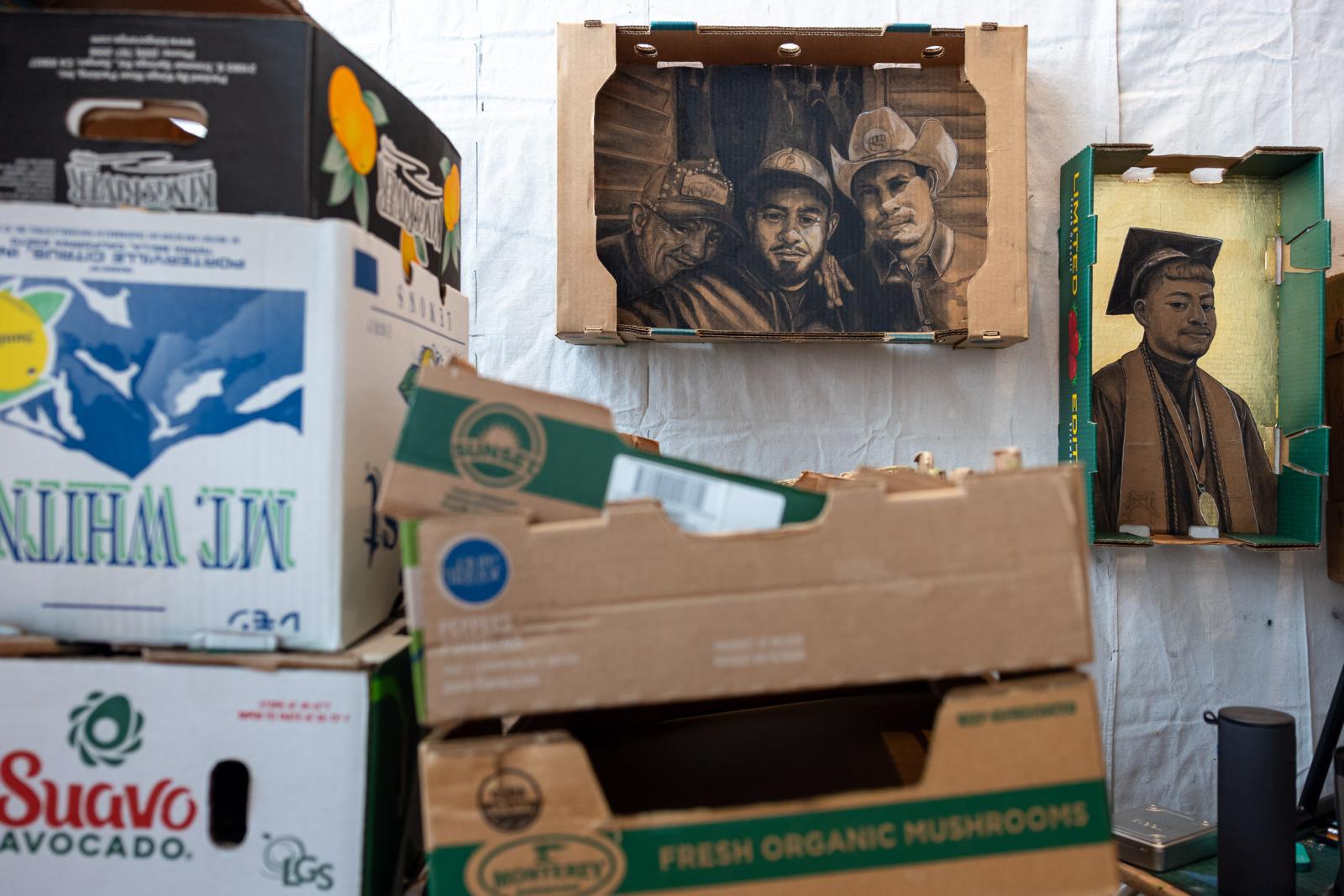
Martinez lived in his studio in Long Beach for many years, until he moved to downtown L.A. earlier this year to be closer to his gallery and art-related activities. He’s currently working on a new exhibition at Charlie James Gallery that will open in September.
“I’m still in my comfort zone right now, and I’m just getting into it, just drawing,” he said. “I’ve got a bunch of ideas. I was invited to do a show at the Hollywood Forever Cemetery. I feel like I’m going to bring a more cohesive theme there, a Day of the Dead theme. I’ll be representing images of people that have passed away – some that I knew when I was in the fields.”
In April, PBS Newshour featured Martinez and his work in its weekly “Brief But Spectacular” interview series. The segment was seen nationwide.
“I received a lot of words of support and made lots of connections,” he said. “A lot of people felt connected with the art. I’m happy that farmworkers are being visible. I’m happy that the general public gets connected somehow with the farmworkers.
“I feel like it’s not about me. It’s about the people who are represented in the art.”







